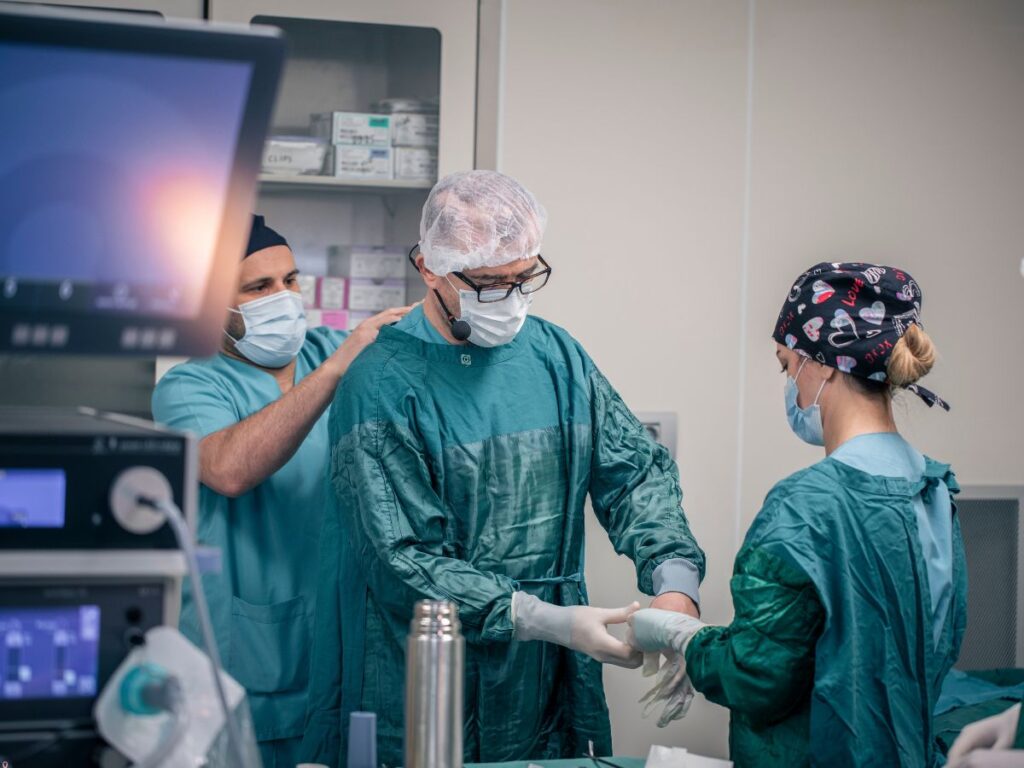Why Post-Op Therapy Matters for the Back
Whether you’ve undergone a lumbar fusion, discectomy, or laminectomy, back surgery only sets the framework for relief. The real victory emerges through structured rehabilitation that reconditions muscles, protects surgical sites, and prevents scar tissue from stiffening the spine. Physical therapy illuminates a path from post-op bed rest to standing, walking, and everyday tasks without exacerbating pain. Absent this stage, surgical incisions can heal in suboptimal alignments, muscle atrophy lingers, and nerve pathways remain inflamed. But with a carefully plotted series of mobility drills, strengthening exercises, and posture cues, you preserve your surgeon’s work and secure the steady, resilient back you’ve hoped for.
Obstacles After Back Surgery
Initially, incisional pain and swelling deter movement, leaving core stabilizers and spinal muscles idle. Scar tissue may accumulate around the operated segments if not addressed with gentle motion. Protective muscle guarding remains, potentially reinforcing the misalignment that preceded surgery. Without professional guidance, fear of re-injury may fuel avoidance, delaying essential physical reactivation. Physical therapy counters these pitfalls by introducing progressive exercises—like gentle trunk rotations or partial bridging—enabling the spine to reacclimate and align with minimal risk. Gradually, nerve inflammation calms, and your back regains the ability to bend, twist, or lift modest loads.
Fundamentals of Back Rehab
While routines vary, post-op therapy often includes:
- Controlled Mobility: Passive or assisted range-of-motion tasks to keep the spine from freezing in protective postures.
- Pain Management Techniques: Gentle stretches or modalities like heat, ice, or electrical stimulation to ease inflammation.
- Core Stabilization: Exercises such as pelvic tilts, modified planks, or bird dogs that rebuild critical support for the spine.
- Posture Training: Correct sitting, standing, and lifting methods to minimize stress on surgical sites.
- Gradual Endurance Work: Light walking or stationary cycling fosters improved circulation without overloading healing tissues.
Together, these elements reestablish healthy spinal mechanics, boosting function and warding off relapse into chronic pain patterns post-surgery.
Dr. Elham’s Role in Post-Surgery Care
Beyond standard rehab, Dr. Elham’s chiropractic perspective ensures the entire spine aligns harmoniously around the operated segments. Once cleared by your surgeon, mild manipulations or manual therapy can free restrictions in adjacent vertebrae—like the thoracic area or sacroiliac joint—that might overcompensate and sabotage the surgical correction. Additionally, if your posture or gait remains skewed, Dr. Elham provides targeted strategies or gentle adjustments to unify the back’s movement. This integrated model both secures the surgery’s outcome and prevents new imbalances from spawning future disc or nerve issues.
Rewards of Thorough Back Rehab
Investing in structured therapy begets numerous benefits:
- Reduced Pain and Swelling: Movement fosters blood flow, cutting inflammation, and enabling tissues to repair faster.
- Stable Spinal Segments: Strengthened muscles protect fused or decompressed areas, deterring micro-instability.
- Faster Return to Tasks: Early, controlled exercises translate into earlier independence with daily chores or job duties.
- Minimized Scar Tissue Adhesions: Gentle mobilizations stop internal scarring from binding nerve roots or restricting motion.
- Long-Term Back Health: Proper alignment and muscle synergy keep the spine resilient, limiting re-injury or adjacent segment stress.
Over weeks, these gains compound, making your spine more functional, comfortable, and prepared to handle daily life’s demands without constant fear of pain spikes.
Upholding Progress at Home
Between therapy visits, Dr. Elham often assigns short exercise regimens—like partial planks or cat-camel stretches—to maintain gains. Practicing neutral spine posture when walking or sitting deters disc re-compression. If lower back soreness resurfaces after extended standing, icing or gentle trunk twists can calm irritation. Avoid bending from the waist to lift heavy objects—use legs or a “golfer’s lift” for lighter picks. By internalizing these small but crucial habits, you consistently reinforce the therapy’s improvements, safeguarding the surgical site from unintentional strain or scar tissue relapse.
Conquering Daily Limits
Post-operatively, bending to pick items off the floor or standing for extended periods can feel daunting. Therapy tackles these obstacles gradually: practicing safe squats for item retrieval, or recommending micro-breaks if standing for long durations. Dr. Elham’s alignment checks refine your form, ensuring the pelvis, spine, and shoulders distribute load evenly instead of overwhelming the healing area. As sessions progress, you’ll test moderate tasks—like gently pushing or pulling, mild housework, or eventually light recreational exercise. Each success lowers the mental hurdle of re-injury, letting you reclaim normal chores and personal interests without crippling fear.
Risks of Bypassing Rehab
Neglecting or rushing post-surgical therapy can lead to protracted stiffness, with scar tissue securing the spine in protective, unnatural postures. Atrophied muscles never regain the strength to stabilize vertebrae, sometimes shifting strain onto discs above or below the surgical site. Pain may linger or even intensify, undermining the surgeon’s work. Over-reliance on pain medications can creep in, complicating recovery. By embracing a structured rehab schedule promptly, you curb these outcomes, letting your spine consolidate the surgical repair into sustainable alignment and function.
Typical Therapy Session Layout
Early appointments involve evaluating incision healing, pain levels, and initial mobility. Passive or gentle active-assisted moves break up early stiffness—like supine lumbar rotations. As discomfort eases, strength moves—such as partial bridging—activate key trunk muscles. Postural training ensures you adopt a neutral pelvis and spine during routine tasks. Dr. Elham may deliver gentle manipulations around the mid-back or hips if subluxations hamper symmetrical movement. Eventually, therapy merges these drills into functional tasks—lifting light objects, short walks—and sets a path toward regaining moderate exercise or more demanding lifts as healing solidifies.
Claiming a Resilient Back
Physical therapy after back surgery transforms your spine from a surgically corrected region into a fully capable, flexible foundation. Each stage—early swelling control, progressive strengthening, posture refinement—reinforces the surgical procedure’s success. Dr. Elham’s complementary chiropractic lens ensures adjacent vertebrae or joints don’t derail recovery with hidden misalignments. In time, tasks you once dreaded—bending to tie shoes or standing for an hour—become approachable. Freed from the cycles of chronic pain or nerve compression, you can resume normal routines, steps, or mild workouts with confidence that your back is robustly supported. Ultimately, thorough rehab cements your spine’s renewed potential, letting you live and move as intended, minus debilitating post-op setbacks.






